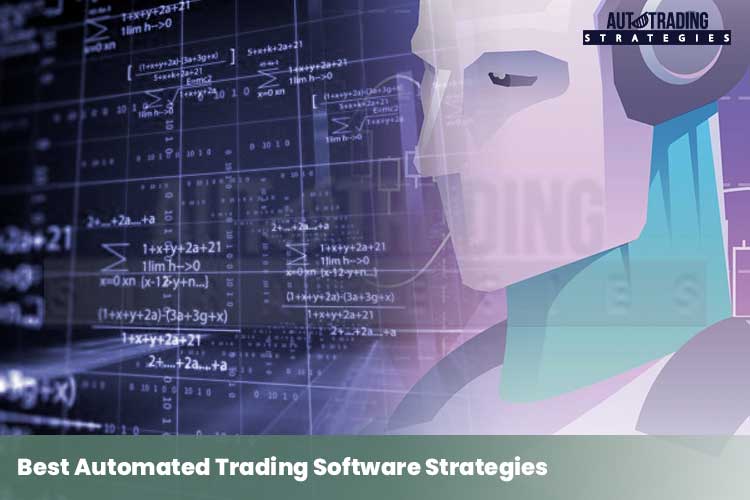Automated trading software is a set of computer programs. Users employ them for making trades with much more speed and accuracy. Trading software analyzes markets and takes action based on pre-existing strategies. The software builder, developer, or user can customize settings to set preferences.
In this article, we will discuss numerous trading strategies used by automated trading software. So let’s first discuss a little background.
Table of Contents
Automated Trading Software in Crypto Trading:
The concept of automated trading software first came in 1949. Richard Donchian coined the idea of setting rules for trading. Traditional markets have since used automated trading software for two main purposes:
Firstly, automated trading bots make the whole process a lot easier. The bot can take care of the portfolio for you. Additionally, all trades are streamlined and there is no abrupt move.
The second reason for using a bot is to beat the competitions. A good algorithmic trading endeavor can even beat the market by predicting a movement beforehand. This can lead to consistent profit-making over a long period of time. However, it is complex and requires a lot of research.
Below are 6 best strategies that Algo traders can use for making profits through a variety of trading systems.
1. Mean Reversion Strategy:
It is a common strategy in both traditional stock markets and crypto markets. Every commodity has an average price. When it moves up or down from that average price point then it is expected to come back there afterward. So, automated trading software can take action accordingly. For example, hypothetically assume that bitcoin’s average price is 1 dollar. The price moves up and goes to 1.5 dollars. As the common market psychology, traders will immediately sell bitcoin in bulk to profit off this price movement. Consequently, the price will go back to 1 dollar. Similarly, if the price drops to 0.5 dollars, the traders will likely start buying taking the price back to where it was.
The mean reversion strategy is based on market psychology. Automated trading software can use this to execute trades and bag earnings.
2. Machine Learning Strategy:
The machine learning strategy employs Artificial Intelligence (AI). It uses the previous data to learn and establish a new crypto trading strategy. As the trading software utilizes more and more data, it grows skillful at predicting price movement. Subsequently, the profits through trades increase exponentially.
The downside of artificial intelligence is that it is complex. In order to make it work you need to have plenty of data. Besides, machine learning may not work for things like news, sentiments, or other factors. An example of a machine learning algorithm used in trading is Naive Bayes.
3. Signal Trading Strategy:
The signal trading strategy uses signals to indicate what is imminent. The two popular signals to look out for are RSI and EMAs. RSI analyses the market and helps traders see where the price might go. It has a value of 0 to 100. A value above 70 indicates that a particular crypto coin is overbought so there is a chance of price pullback. While value below 30 shows that coin is oversold. Thus a bounce is expected.
EMAs or Exponential Moving Averages show convergence divergence. The trading software has to take into account at least two EMAs for analysis of the market. Additionally, a plethora of other technical indicators can guide automated trading software when to enter in trade. Nonetheless, traders should choose the combination of signals carefully, as sometimes one signal can oppose the other.
Also Read: Crypto Trading Signals: An Ultimate Beginner’s Guide
4. Arbitrage:
The arbitrage technique is another famous process of using price difference across exchanges for your own benefit. It is a strategy used by automated trading software to buy/sell coins immediately when a price fragmentation arises. For example in a hypothetical scenario, the price of bitcoin is $1.02 in Binance Exchange and $1.03 in Kraken Exchange. You can buy the coin in Binance and sell in Kraken bagging the profit. The profit through this strategy is usually not much as price differences can’t be huge across exchanges.
A manual trader will have a much harder time taking advantage through arbitrage. Essentially, you have to buy and sell an asset at the same time. Only a computer program can execute this with speed.
5. Ping-Pong Strategy:
This is another cryptocurrency trading software strategy. Traders need to buy at a low price and sell at a high price to profit from this strategy. The ping pong strategy is efficiently executed by the trading bot. Crypto trading platforms give options for setting buy orders and sell orders at a certain percentage. Moreover, automated trading software can run as long as the user wants them to. Therefore, the ping-pong strategy can work with the ‘set and forget’ method.
6. Follow the Trend:
This is the easiest and simplest strategy. The trading software has to follow the market trend and compete with other traders to make the right move at right time. The trend-following strategy doesn’t require any deep analysis or algorithms. A simple crypto trading software can effectively execute orders by catching up on market movement.
Conclusion:
Automated trading software are becoming very popular among the crypto trading community. They help traders live their life without being bound to computer screens. Many trading bots are cloud-based, which means they keep running even when you shut down the computer. You can read the guide on the best crypto trading bots here. They all have unique features that you can use for your own benefit.
